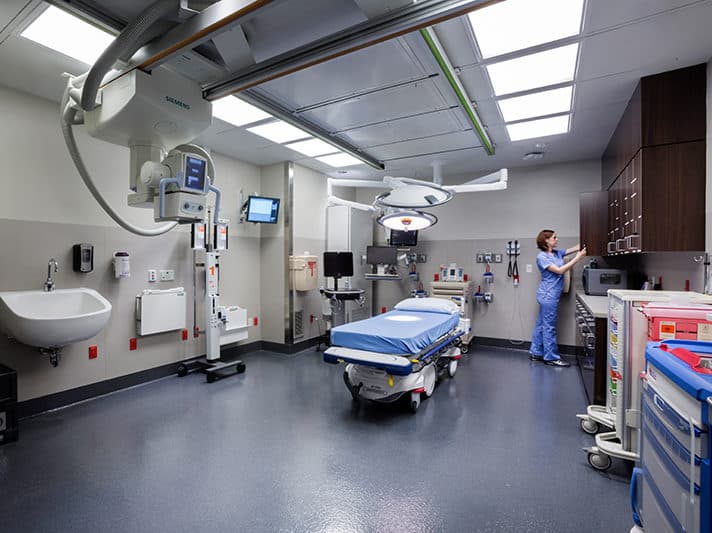For certain emergencies, not just any hospital will do. These patients need care at a designated trauma center.
Ever wonder what that means? How is a trauma center different from an emergency room? And what do the levels represent? Here are some answers.
For starters, a trauma center is much more than an emergency department (ED). Trauma centers are able to provide more extensive care as they are equipped to treat the most serious of injuries — major car accidents, gunshot wounds, and severe burns.
Every trauma center is given a “level,” which represents the center’s capabilities. They range from Level I trauma centers, which are able to provide care for the most traumatic injuries, down to a Level V, which are able to provide basic life-support prior to patients being transferred to a higher-level trauma facility. Getting critically injured victims to the right trauma center in the least time is the single biggest factor in preventing death or disability.
Levels of trauma care
The different levels are categories that define national standard for adult trauma care in hospitals (pediatric hospitals have their own categories). In order to be a “leveled” trauma center, the center must voluntarily submit to an evaluation process done by the American College of Surgeons.
“The steps to becoming a verified and certified trauma center are incredibly rigorous but necessary to ensure that these centers have the resources for optimal care of injured patients,” explains J. Darryl Amos, MD, FACS, Executive Medical Director of Trauma Centers at Methodist Charlton, Methodist Dallas, and Methodist Mansfield Medical Centers.
| Trauma Level | What is required |
| Level I | 24-hour, in-house coverage by general surgeons and prompt availability of care in the following specialties: orthopedic surgery, neurosurgery, anesthesiology, emergency medicine, radiology, internal medicine, plastic surgery, oral and maxillofacial surgery, pediatrics, and critical care |
| Level II | 24-hour immediate coverage by general surgeons, as well as coverage in the following specialties: orthopedic surgery, neurosurgery, anesthesiology, emergency medicine, radiology, and critical care |
| Level III | 24-hour immediate coverage by emergency medicine physicians and prompt availability of general surgeons and anesthesiologists |
| Level IV | Basic emergency department facilities to implement advanced trauma life support protocols and 24-hour laboratory coverage
Available trauma team and physician available on patient arrival |
| Level V | Basic emergency department facilities to implement advanced trauma life support protocols |
We’re proud to offer trauma care you can trust
Methodist Dallas has served North Texans with trauma care for more than 35 years. In 2014, the hospital became only the third adult Level I Trauma Center in Dallas County, greatly enhancing the entire North Texas trauma system. Then in 2018, Methodist Charlton and Methodist Mansfield were awarded Level III Trauma Center status.
High-volume centers that receive complex traumatic injuries are specially equipped to not only treat the immediate trauma but to help a patient’s long-term recovery.
“The true value of a trauma center is how comprehensive the medical services are,” Dr. Amos says. “The resources are in place to address all the needs of a trauma patient, from surgery to rehabilitation.”
Learn more about the trauma and emergency services at our hospitals.

